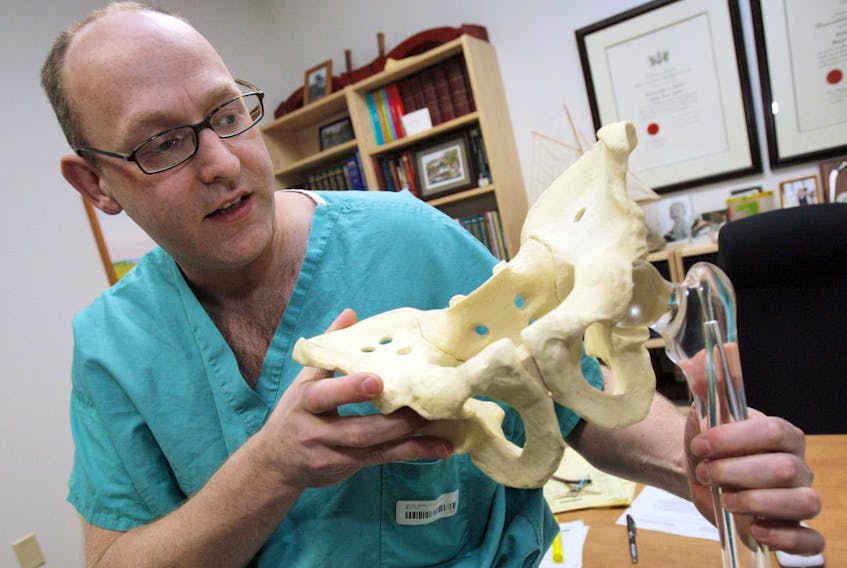The number of hip and knee replacement surgeries has jumped in the past five years across Canada, particularly in the Atlantic region.
Surgery volumes have increased by 17 per cent since 2013/14, according to a report by the Canadian Institute for Health Information. In 2017/18, there were about 130,000 hip and knee replacements, which cost the hospital system about $1.2 billion.
“That’s not counting physician cost,” said Nicole de Guia, CIHI’s manager of the Canadian Joint Replacement Registry, in an interview from Toronto. “It’s pretty significant — hip and knees across the country are the most frequent in-patient surgeries.”
Orthopedic surgery volumes in Atlantic Canada exceeded the national average, except for Prince Edward Island. At 29 per cent, Newfoundland and Labrador showed the biggest jump since 2013, followed by Nova Scotia at 25 per cent and New Brunswick at 19 per cent.
There was only a marginal increase in hip and knee replacements in Prince Edward Island at 1.8 per cent since 2013/14.
The overall spike in surgeries can be attributed to Canada’s aging population, as well as increased provincial spending to reduce waiting lists.
For example, in its last budget, the Nova Scotia government increased its orthopedic services budget by $2.2 million and hired four more orthopedic surgeons. Nova Scotia has spent $39 million over the past three years to reduce orthopedic waiting times, which are among the longest in the country, particularly for hip replacements.
Besides the increase in primary surgeries, the CIHI report raised concerns about the number of people who had to go back under the knife after their procedures.
Last year, more than 9,700 Canadians had a revision surgery because the artificial joint wasn’t working properly or because of infection problems.
A hip or knee replacement should last for about 15 years.
Hospital stays after revision surgeries, which are done four years or less after the initial surgery, are twice as long compared to the primary surgery. For that reason, a revision surgery costs about 80 per cent more than a primary joint replacement.
Last year alone, revision surgeries cost the Canadian health system more than $163 million.
Orthopedic surgeon Michael Dunbar told The Chronicle Herald last year that about half of the 150 to 200 joint replacements he does every year are revision surgeries.
Dunbar, who works with the joint replacement registry that produced CIHI’s report, said infections are the No. 1 reason people must have another surgery. Infection onsets can be related to the age of the patient, their overall health and if they have conditions such as diabetes or congestive health failure.
De Guia said health policy makers should be looking for ways to reduce revision surgeries.
“It’s quite costly and it’s really devastating for the patient to have to go back for a repeat surgery, particularly for an infection, which are largely preventable,” de Guia said.









